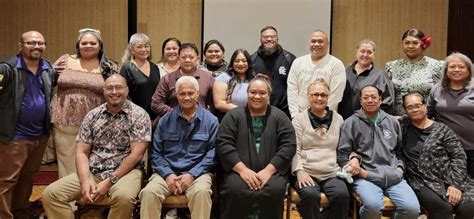Filipino, Pacific Islander, and Asian Americans are vital pillars of the American tapestry, enriching our nation with their diverse cultures, traditions, and contributions. Understanding their experiences and heritage is crucial for fostering inclusivity and celebrating the vibrant mosaic of our society.

Historical Foundations
A Legacy of Immigration:
Filipino, Pacific Islander, and Asian Americans arrived in the United States in waves throughout history, bringing their unique cultures and settling in various parts of the country. By 2019, according to the U.S. Census Bureau, there were approximately:
* 4.2 million Filipino Americans
* 1.5 million Pacific Islander Americans
* 22.2 million Asian Americans
Challenges and Triumphs:
Like many immigrant groups, Filipino, Pacific Islander, and Asian Americans faced challenges upon arrival, such as discrimination, language barriers, and economic hardship. However, they also persevered and thrived, establishing businesses, institutions, and communities that have become integral parts of American society.
Cultural Diversity and Identity
Rich Cultures and Traditions:
Filipino, Pacific Islander, and Asian cultures encompass a vast array of languages, religions, customs, and art forms. Filipino Americans, for example, celebrate the vibrant traditions of their homeland, such as the “Ati-Atihan” festival, while Pacific Islander Americans embrace the rich heritage of their ancestral islands, including hula dancing and Polynesian navigation. Asian Americans, representing a multitude of countries and ethnicities, bring a diverse range of cultural practices and perspectives to the American landscape.
Multiple Identities:
Many Filipino, Pacific Islander, and Asian Americans navigate complex and multifaceted identities. They may identify as both Filipino and American, Samoan and Hawaiian, or Indian and Californian. This intersectionality of cultures shapes their experiences and perspectives, leading to a rich and diverse understanding of the world.
Contributions to American Society
Economic Impact:
Filipino, Pacific Islander, and Asian Americans play a significant role in the American economy. They own businesses, contribute to the workforce, and drive innovation. According to the Asian Economic Alliance:
* Asian-owned businesses generate $2.2 trillion in annual revenue.
* Filipino American households have a median income of $85,400.
Cultural Enrichment:
Filipino, Pacific Islander, and Asian Americans have enriched American culture through their cuisine, arts, and traditions. They have introduced exotic flavors, vibrant music, and stunning visual arts to the mainstream, creating a more diverse and vibrant cultural landscape.
Advocacy and Activism:
Filipino, Pacific Islander, and Asian Americans have been vocal advocates for social justice and equality. They have fought for civil rights, fair treatment, and the protection of their cultural heritage.
Issues and Challenges
Discrimination and Bias:
Despite their contributions, Filipino, Pacific Islander, and Asian Americans still face discrimination and bias. This can include:
* Racial slurs and stereotypes
* Hate crimes
* Workplace discrimination
* Educational disparities
Health Disparities:
Filipino, Pacific Islander, and Asian Americans face certain health disparities compared to the general population. These include:
* Higher rates of diabetes and obesity
* Lower rates of cancer screening and treatment
Strategies for Inclusion and Empowerment
Education and Awareness:
Educating the public about the history, culture, and contributions of Filipino, Pacific Islander, and Asian Americans is essential for fostering understanding and respect. This can be done through school curricula, community programs, and media representation.
Representation and Empowerment:
Increasing representation of Filipino, Pacific Islander, and Asian Americans in various sectors, including politics, media, and business, can empower their voices and challenge stereotypes. By seeing themselves reflected in leadership roles, they gain inspiration and a sense of belonging.
Cultural Sensitivity:
Promoting cultural sensitivity and respect is crucial for creating inclusive environments. This involves understanding and valuing the cultural practices and values of Filipino, Pacific Islander, and Asian Americans, and avoiding insensitive or disrespectful behavior.
Community Building:
Strengthening community organizations, cultural centers, and support networks empowers Filipino, Pacific Islander, and Asian Americans and provides a sense of belonging. These spaces foster connections, preserve traditions, and advocate for their interests.
Benefits of Inclusion and Empowerment
Economic Prosperity:
By fostering inclusion and empowering Filipino, Pacific Islander, and Asian Americans, we create a more diverse and equitable workforce that drives economic growth and innovation.
Social Cohesion:
When all members of society feel valued and respected, it strengthens social cohesion and creates a more harmonious and inclusive environment.
Global Understanding:
Embracing the diverse cultures and perspectives of Filipino, Pacific Islander, and Asian Americans promotes global understanding and cooperation, fostering connections with other nations and cultures.
Conclusion
Filipino, Pacific Islander, and Asian Americans are an integral part of the American fabric, contributing their rich cultures, traditions, and perspectives to our nation. By embracing inclusion, addressing challenges, and fostering empowerment, we unlock the full potential of these vibrant communities and create a more inclusive and equitable society for all.
